
Trees Around Las Vegas, Vegetation Around Las Vegas
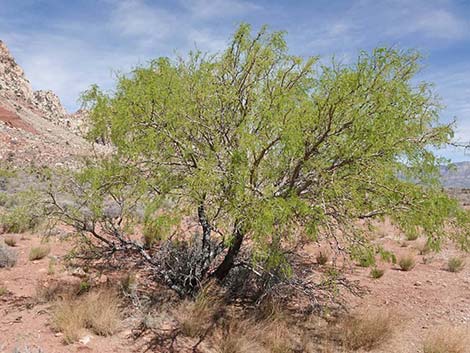 Honey Mesquite tree |
General: Honey Mesquite (Neltuma glandulosa) is a medium-sized, spindly, many branched, thorny tree with long, straight, stout spines along the stems. The leaves are compound with many paired, long-narrow, glossy-smooth leaflets. Honey Mesquite produce bean pods that are large, flat, and sickle-shaped (more-or-less straight compared to the other local mesquite: Screwbean Mesquite (Prosopis pubescens). Honey Mesquite are fairly common components of wash communities and other wet areas in the Lower Sonoran (Creosote-Bursage Flats) and Upper Sonoran (Mojave Desert Scrub) life zones, mostly south of Las Vegas. Family: Pea (Fabaceae). The genus Prosopis (Mesquites) has been broken up into six genera based on molecular and morphological evidence, and all six genera are distinguishable by fruit and spine characters. Prosopis is now restricted to the old-world, and Neltuma and Strombocarpa represent new-world species. Other Names: Glandular mesquite. Prosopis glandulosa. |
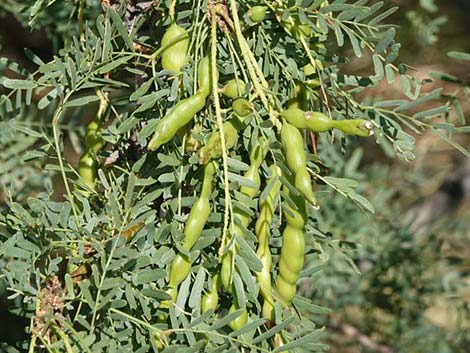 Honey Mesquite developing seed pods |
Plant Form: Medium-sized, spindly, many branching tree; forms thickets. Height: Usually 15-20 ft Trunk: Thick with rough bark. Leaves: Compound leaves with many long, narrow leaflets. Leaflets smooth (hairless). The species of mesquite in Arizona (Velvet Mesquite, Prosopis velutina), has hairy leaflets. The leaflets are also short and wide compared to Honey Mesquite. Flowers: Bottlebrush-shaped catkins on a stalk (spikes). Individual flowers are small, creamy or pale yellow, and tubular. Blooms late spring to early fall. |
 Honey Mesquite stems with stout thorns |
Seeds: Large; seeds born in long, straight, string-bean-like pods. Distribution: Southern California to western Oklahoma, south into Mexico. Elevation: Comments: These plants indicate the presence of water, but the roots can penetrate 70-80 feet to reach it, so it probably isn't worth digging to find water. Honey Mesquite were a staple in the diet of southwestern Native Americans. They ground the seeds and seed pods to make flower for baking. Mesquite often are parasitized by Mesquite Mistletoe, which appears as clumps of stems with white or red berries. Phainopepla depend on these berries for food, but they are toxic to humans. |
 Mesquite tree on desert flats |
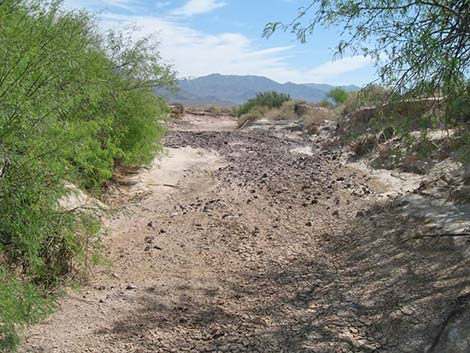 Mesquite trees lining a desert wash |
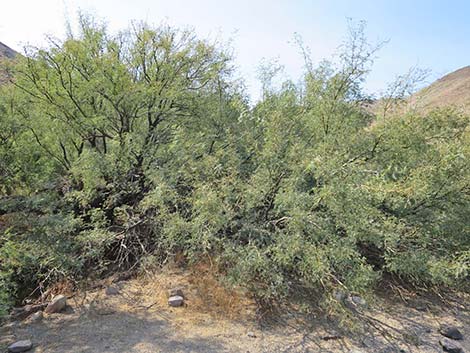 Mesquite thicket |
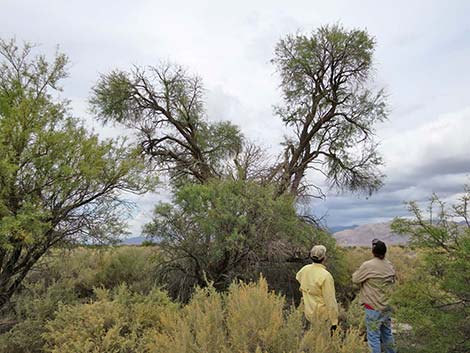 State record: largest Honey Mesquite tree in Nevada |
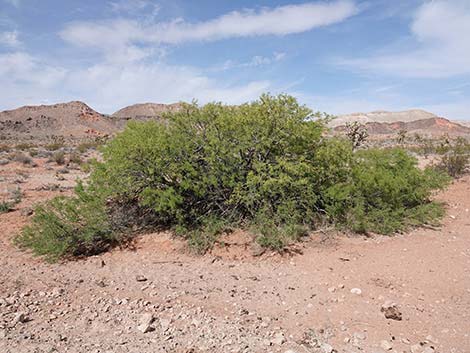 Honey Mesquite |
 Honey Mesquite on high ground in a playa |
 Honey Mesquite with shaggy bark |
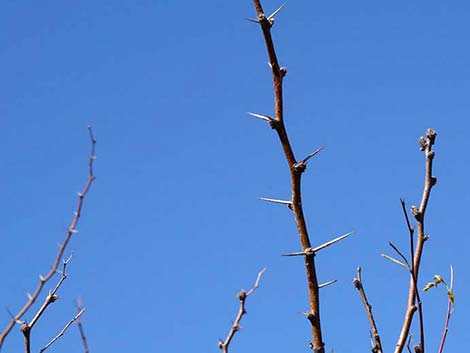 Honey Mesquite with long, stout, sharp spines |
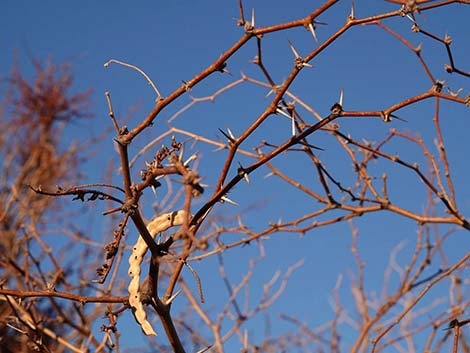 Stout spines |
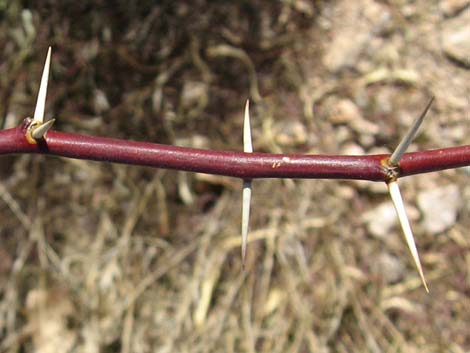 Stout spines |
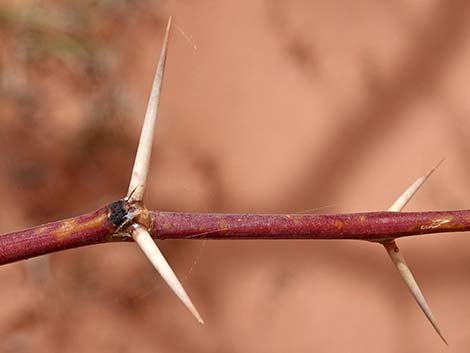 Stout spines |
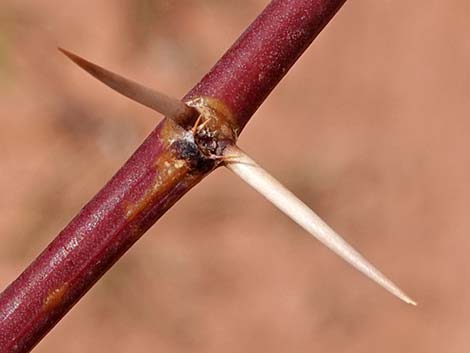 Stout spines |
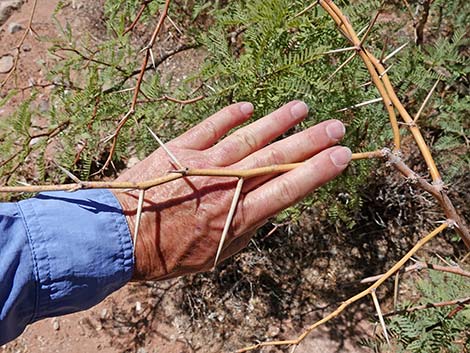 Honey Mesquite with very long, stout spines |
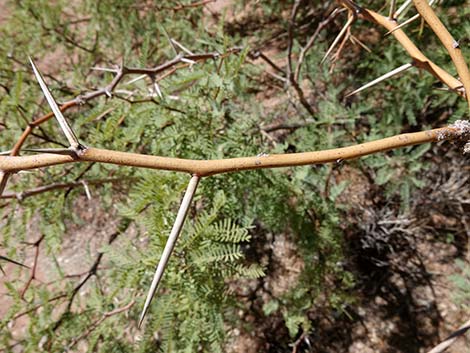 Honey Mesquite with very long, stout spines |
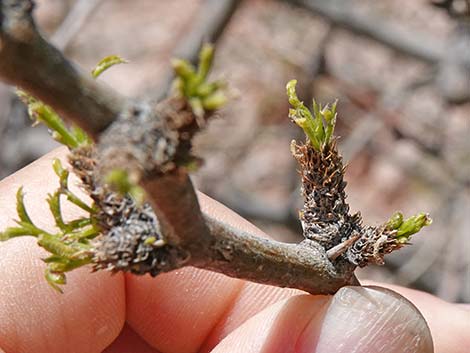 |
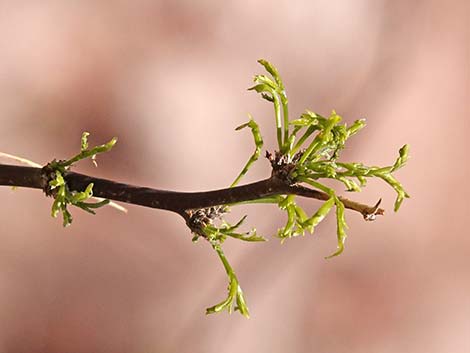 |
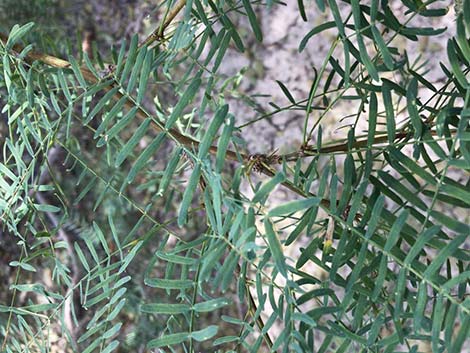 Leaves compound with many paired, long-narrow, glossy-smooth leaflets |
 One compound leaf in the palm of my hand |
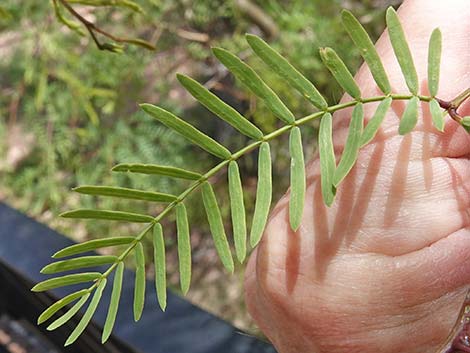 One compound leaf with many long, narrow leaflets (upper surface) |
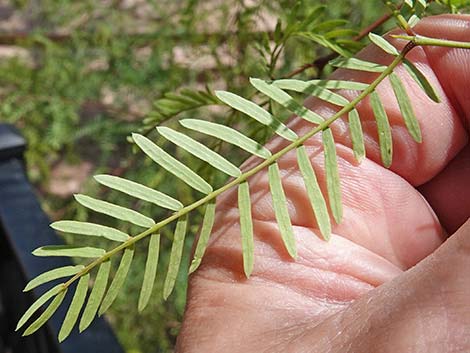 One compound leaf with glossy-smooth leaflets (lower surface) |
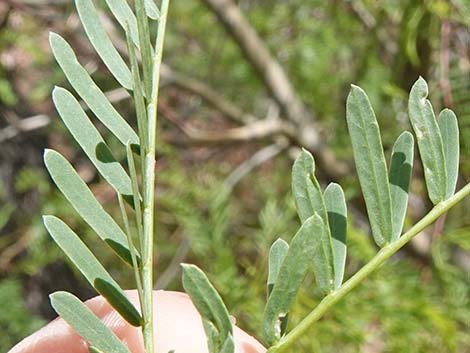 Paired, glossy-smooth leaflets; long and narrow |
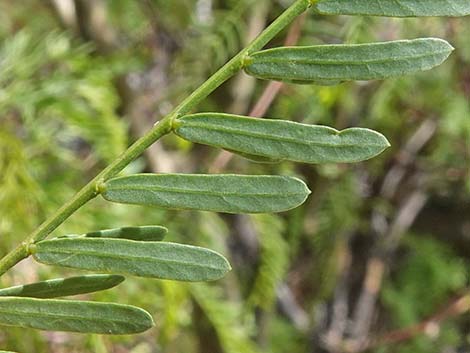 Paired, glossy-smooth leaflets; long and narrow |
 Flower buds |
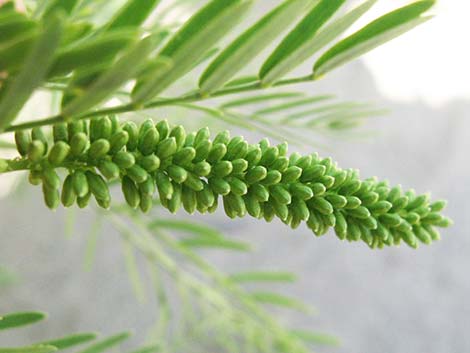 Flower buds |
 |
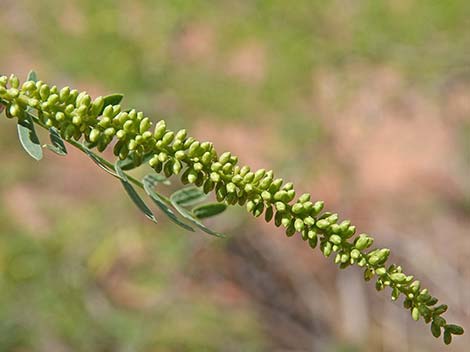 |
 |
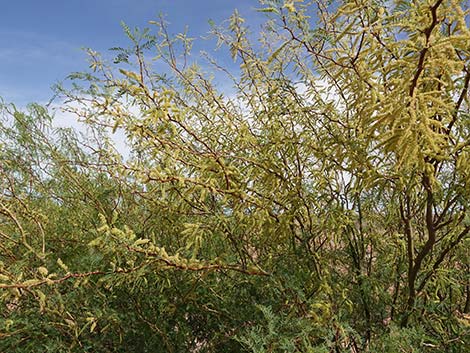 |
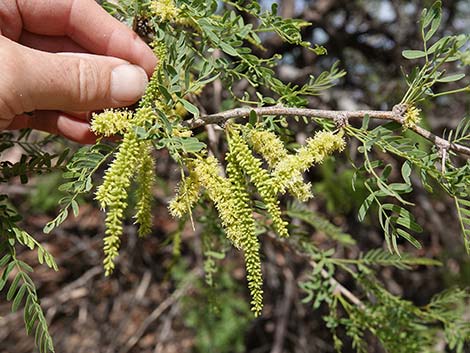 |
 |
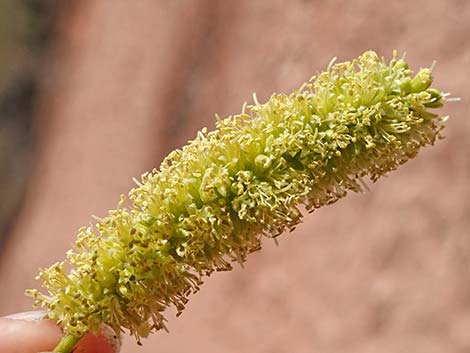 |
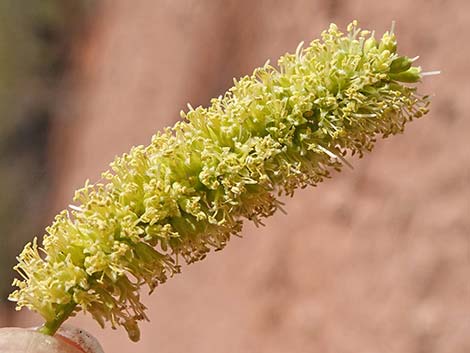 |
 |
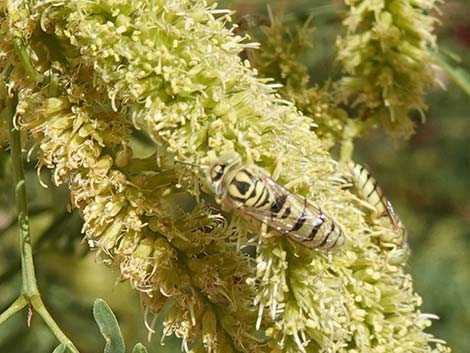 |
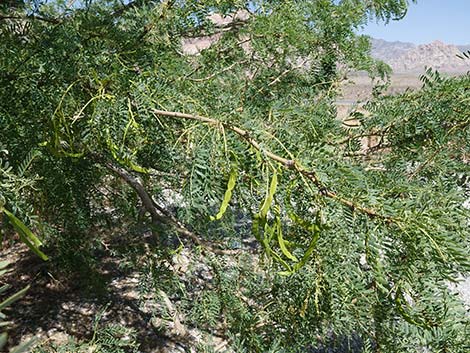 |
 |
 |
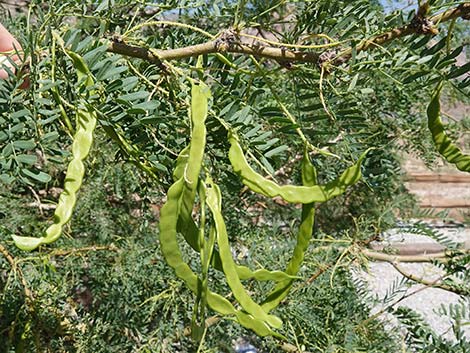 |
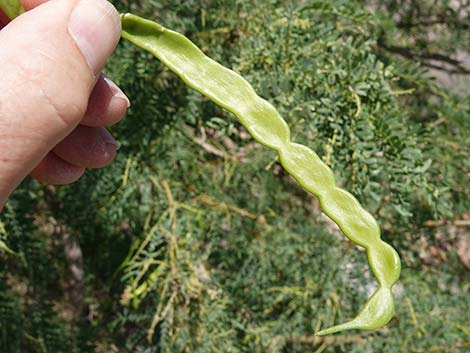 |
 |
 Honey Mesquite ripening beanpods |
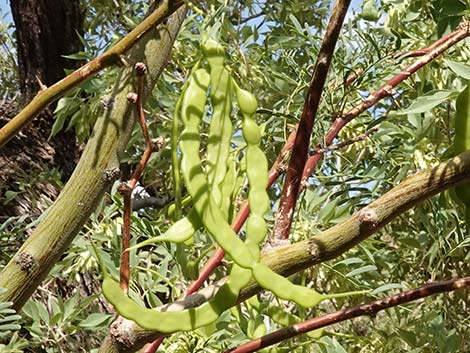 Honey Mesquite ripening beanpods |
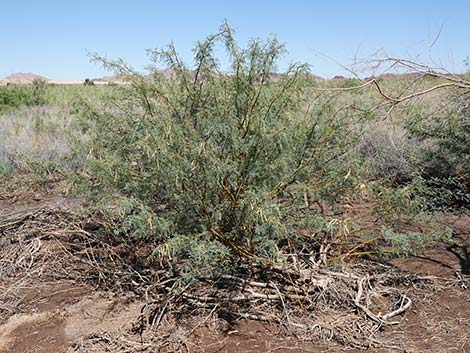 Honey Mesquite with dried fruits |
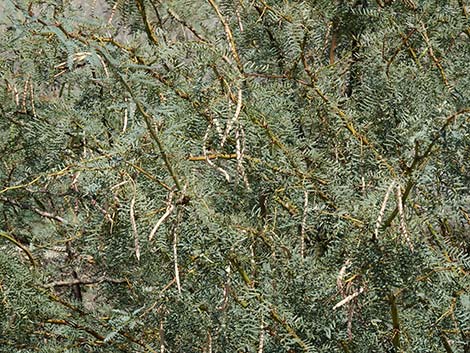 Honey Mesquite with dried fruits |
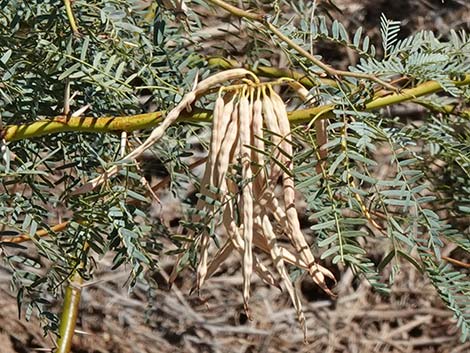 Honey Mesquite with dried fruits |
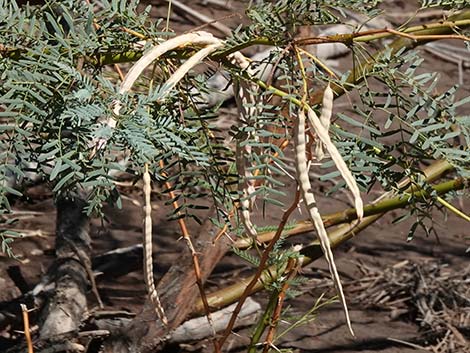 Dried fruits in a Honey Mesquite tree |
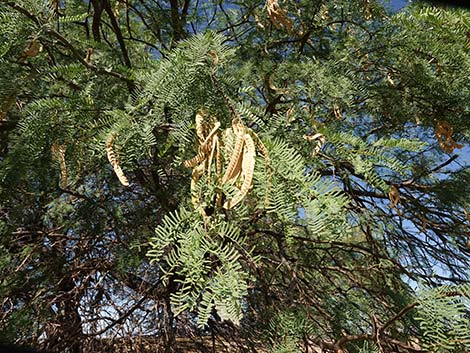 Honey Mesquite ripe beanpods |
 Honey Mesquite ripe beanpods |
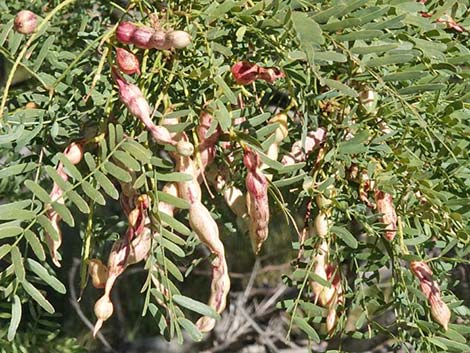 Honey Mesquite drying seed pods |
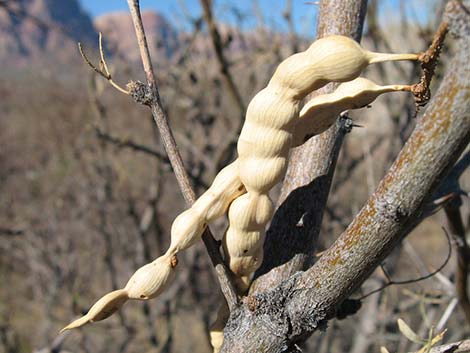 Honey Mesquite dry seed pods |
 During late summer, beanpods fall to the ground |
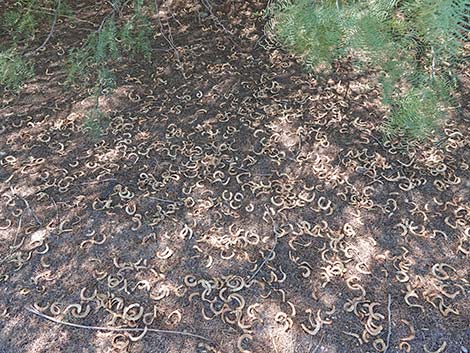 Many beanpods on the ground |
 Honey Mesquite without leaves during winter |
 Honey Mesquite branches without leaves during winter |
Note: All distances, elevations, and other facts are approximate. Names generally follow the USDA database.
![]() ; Last updated 231203
; Last updated 231203
| All Deciduous Trees | Plant Species Index | Glossary | Copyright, Conditions, Disclaimer | Home |